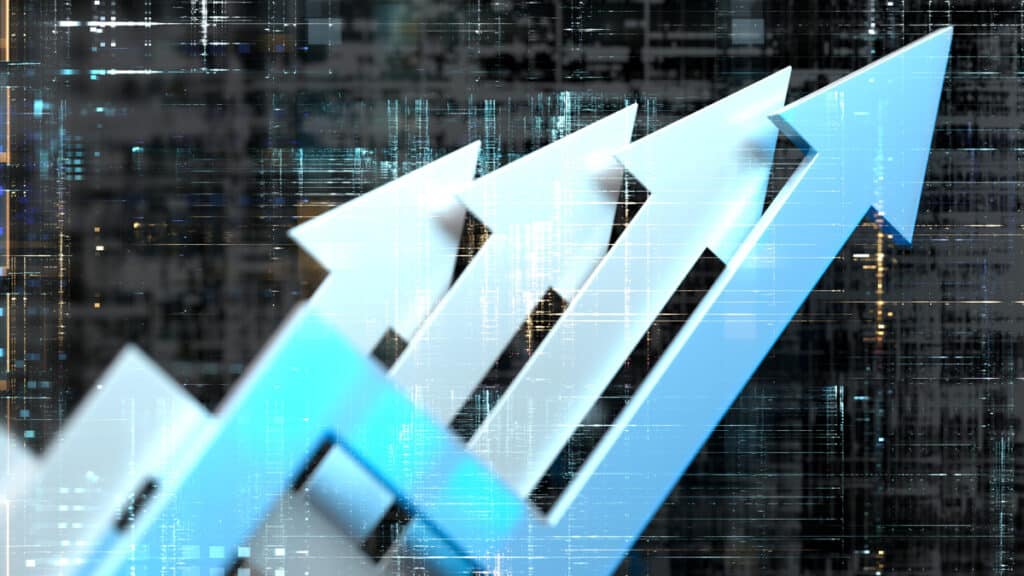European Components Distribution (DMASS) continues to grow double-digit through second quarter of 2022. DMASS reports Q2 increases of 33.4% in semiconductors and 19.6% in interconnect, passive and electromechanical components. Allocation continues, but selected relief visible. Future risk assessment becomes more difficult.
Allocation and shortage continue to make their mark on the European components distribution business, but are now accompanied by partial relief in some product areas. Nevertheless, according to DMASS Ltd., semiconductor distribution sales, as reported by members, grew by 33.4% to 3.09 Billion Euro. IP&E (Interconnect, Passive and Electromechanical) components grew by 19.6% to 1.51 Billion Euro. In total, the components distribution market grew by 28.5% to 4.60 Billion Euro.
Hermann Reiter, chairman of DMASS: “Coming from an extremely good Q2/21, it is no surprise that the growth rates in the last quarter have been lower than at the beginning of the year. That said, an overall growth of 28.5% is excellent, and order books as well as backlog are still strong. The complete stop of business with Russia has had some impact, so that a 1:1 comparison is not quite possible. In a nutshell, we are happy with the numbers, but not with the fact that we could not satisfy the full demand of our customers. When the situation will finally normalise is hard to say as it depends on too many intrinsic and macro-economic factors.”
Semiconductors:
Semiconductors remained the driving force in Q2’s growth. From a regional view, except for some smaller countries or regions, growth of semiconductors was over-proportional (except UK and Turkey). Germany grew by 38% to 852 Million Euro, Italy by 39% to 297 Million Euro, France by 43.4% to 215 Million Euro and the UK by 26% to 212 Million Euro. Eastern and Northern Europe ended almost in lockstep with 36.8% and 37.1% growth (to 559 Million Euro and 248 Million Euro respectively). Russian sales came to an almost complete halt, as most Western organisations have shut down their operations there.
From a product perspective, the growth rates were distributed much wider, from a meagre 6% growth for Optoelectronics to a whopping 74% in Programmable Logic. While specialties like Flash-Memories, Other Logic (ASSPs) and Programmable Logic literally went through the roof, Opto, Power, Discretes ended up with way below-average growth. Analog and MOS Micro as the biggest product groups came in slightly below average, but still at over 30%. Analog grew by 31.3% to 870 Million Euro, MOS Micro by 30.4% to 603 Million Euro, Power by 18.5% to 345 Million Euro, Memories by 63.7% to 351 Million Euro, Opto by 6% to 238 Million Euro, Other Logic by 71.4% to 186 Million Euro, Programmable Logic by 74.4% to 198 Million Euro, Discretes by 21.6% to 174 Million Euro and Sensors (incl. Actuators) by 32.8% to 90 Million Euro.
Interconnect, Passive and Electromechanical Components:
Interconnect, Passive and Electromechanical (IP&E) components grew in Q2/22 at a slower pace than Semiconductors, suggesting a faster return to normal in that specific space. Last quarter`s 1.51 Billion Euro (+19.6%) split as follows: Germany grew by 25.4% to 393 Million Euro, Italy by 20.1% to 170 Million Euro, France by 17.4% to 135 Million Euro, UK by 18.4 to 143 Million Euro and Eastern Europe by 21.2% to 199 Million Euro. Electromechanical products, including Interconnect, represented the biggest product group, with 808 Million Euro (+19.8%), followed by Passives with 616 Million Euro (+18.6%) and Power Supplies with 87 Million Euro (+25.5%).
Chairman Hermann Reiter: “While we hope the overall supply situation gets better, some structural shortages will remain beyond 2022, as we keep hearing from the market. What is more worrying, are the mid-term outlook and the massive challenges on the economy: Russian attack on Ukraine, energy crisis, inflation, economic slowdown globally, climate crisis – the multiplication of these may lead to very difficult market conditions. Even for an industry like ours that for many decades has benefitted from over-proportional growth, due to the pervasive and innovative power of our technologies. The next quarter will definitely show which direction the market will go for some time to come. Nevertheless, long-term we are optimistic for the electronics industry to continue to make a difference.”
